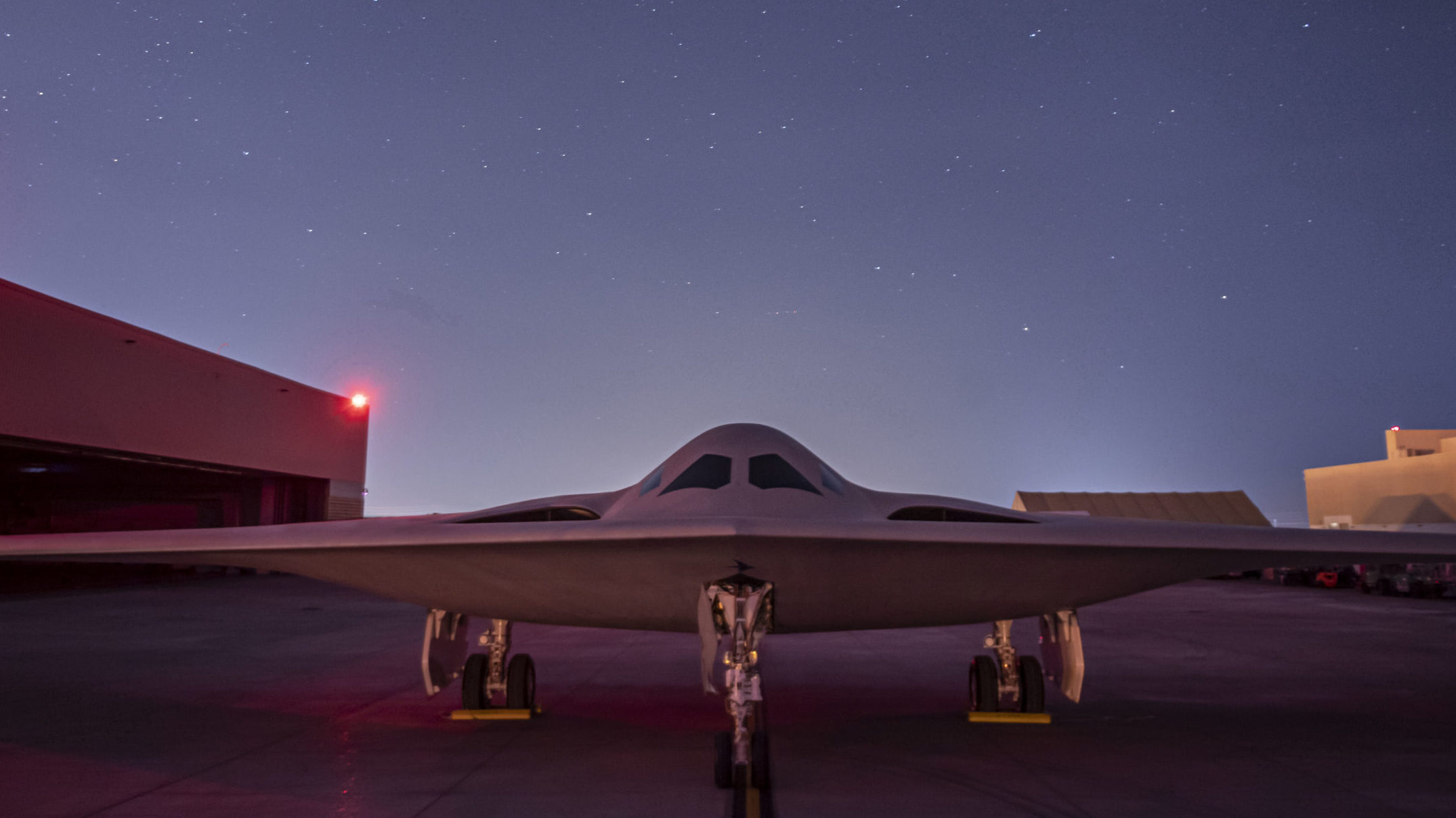
The B-21 Raider was unveiled to the public at a ceremony December 2, 2022 in
Palmdale, Calif. Designed to operate in tomorrow’s high-end threat environment, the B-21 will play a critical role in ensuring America’s enduring airpower capability. (U.S. Air Force photo)
WASHINGTON — To prevail in a war against China, fend off a peer adversary in a separate theater and deter nuclear attack on the homeland as the 2022 National Defense Strategy (NDS) demands, the US should more than double its planned purchase of B-21 Raider stealth bombers, according to a new report from the Mitchell Institute.
The report says that the Air Force’s bomber fleet size will need to be above 300, which must include 225 or more B-21s along with the legacy B-52s. The next-generation stealth bomber, only unveiled publicly in December, would be crucial for defeating a dense network of anti-access/area denial systems that define environments like the Indo-Pacific, where US forces would otherwise have to operate at standoff ranges.
“DoD’s combat air forces are now over-balanced toward shorter range aircraft with smaller payloads and bombers, and most are still fourth-gen or earlier systems that are not designed for today’s contested environments,” the report’s author, Mitchell Institute Director of Future Concepts and Capability Assessments and former B-52 pilot Mark Gunzinger, said today during the institute’s virtual rollout of the report.
The bomber inventory has declined steadily in the post-Cold War era especially as the US focused on defeating counterterrorism, missions that did not require long-range penetrating strike capabilities. Now that the US is eyeing potential conflict with a peer competitor like China, the report says the bomber inventory will need to be rebuilt — echoing previous reports published by the institute that similarly raised alarm about the Pentagon’s long-range strike inventory. Bombers, the institute argues, can deliver effects on targets in a rapid and more cost-effective way than capabilities like cruise missile strikes.
Air Force Maj. Gen. Jason Armagost, also a panelist today, didn’t discuss his position on the best numbers for the Raider, but praised the report for presenting a “useful” way to think about the service’s force structure as officials sit at “decision points” for its future composition.
“I think we probably would argue that maybe going back 10 or 20 years, we would have made slightly different choices,” said Armagost, who serves as Global Strike Command’s director of strategic plans, programs and requirements.
The report ultimately makes five recommendations for the Air Force’s bomber fleet, including ramping up the Raider’s acquisition. The bomber’s production rate should be accelerated to 20 or more per year as soon as possible, the report adds, a rate it says is on par with its predecessors.
Procurement of the bomber commenced last year with $1.3 billion in funds, and the Air Force has said it plans to buy “at least 100” of the aircraft, though current acquisition quantities are classified. In its recently released fiscal 2024 budget request, the Air Force indicated it plans to spend about $2 billion on procurement of the bomber in the coming fiscal year, along with $2.7 billion to continue research and development.
After some early predictions that the bomber could fly as soon as 2021, the B-21’s first flight is now scheduled for this calendar year, according to service officials. At the McAleese Defense Programs conference last week, Air Force Secretary Frank Kendall revealed that the program’s internal schedule had once again slipped “a few months,” though it’s still within its baseline schedule.
During a press briefing last week ahead of the report’s unveiling, Gunzinger argued that he would be comfortable ramping up production “as fast as possible” for the bomber despite its first flight still ahead of it, where new issues could be identified during flight testing — a strategy that has not served other airframes, like the F-35, well in the past.
Gunzinger explained that the Raider is distinguished from more fraught acquisitions like the F-35 due to the bomber’s “very mature technologies,” making its development more a “matter of integration than invention.”
Heather Penney, a senior resident fellow at the Mitchell Institute, allowed during the briefing, “You will always have the teething issues of fielding a new platform.”
“We must have the B-21 as soon as possible and as many of them as possible to address how thin the bomber fleet is now and to address the need to be able to deter and do the other operations not only against China, but across the globe,” she said.






















